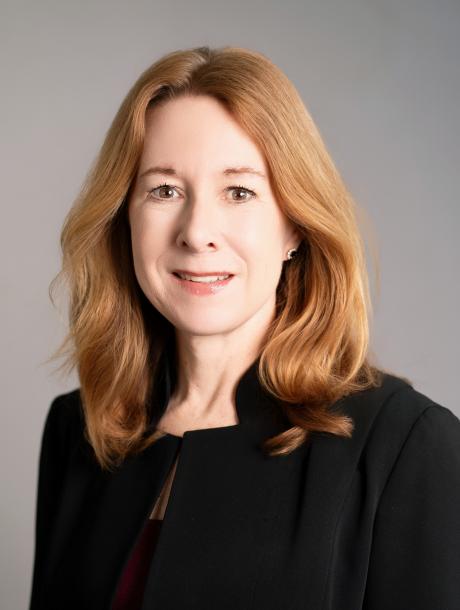The Public-Private Continuum
Issue № 7 | October 2025
Welcome back!
The distinction between public and private markets, once clear-cut, seems to be fading. Although it's too early to call it a radical shift, we are clearly witnessing bold changes in how capital is allocated, managed, and accessed.
In the US, historically the hub of global capital markets, the number of publicly listed firms fell from more than 7,000 in the late 1990s to about 4,000 by 2022 – roughly half the previous total. An even sharper contraction is unfolding in Europe, where the IPO drought has driven stock exchanges to compete fiercely for major listings like Verisure, whose IPO ultimately took place in Stockholm in October.
On one hand, these figures should not be overstated. Albeit fewer in number, public firms are still in aggregate performing well financially. As demonstrated by Roe and Wang, public firms in the US have even doubled their profits since 1996. On the other hand, the decrease in their number is real.
Many firms, although large enough, prefer not to go public. Among them are mature startups that choose to stay private – often referred to as unicorns. In our feature interview this month, Professor Michelle Lowry observes that such firms are a sort of hybrid: essentially public in size, but still private in form.
Why do firms increasingly opt to remain private? As shown by Professor Lowry's research, one of the main factors is the abundance of capital from venture capital and private equity sources, which enables firms to secure sufficient funding without accessing capital markets. Moreover, the extensive reporting requirements imposed on public firms may expose sensitive intellectual property assets – cornerstones of the modern digital economy.
As Cheffins and Reddy suggest, there is no single suspect responsible for the decline in listings, but rather a convergence of multiple causes. Recognising this, a further key question is whether these hybrids should adjust their governance frameworks.
In this regard, Professor Lowry points out that as private firms grow, their governance gradually mirrors that of public firms. With growth comes complexity, driving the need for independent directors and more formal board structures – once changes seen only after an IPO.
Yet there is a crucial difference between a development that emerges spontaneously and one that is enforced by policy. At present, many regulatory instruments provided for public firms do not apply to private ones – for example, this is the case for sustainability disclosure requirements. Even a limited extension of such instruments would likely spark debate and may have side effects, such as prompting firms to relocate abroad or inefficiently limit their growth, as noted by Professor Lowry.
The bright side of this trend may lie in the creation of a natural buffer zone between public and private markets, enabling firms to mature at their own pace and take the big leap of going public only when ready.
For deeper insights on the public-private divide we invite you to read our illuminating interview with Michelle Lowry. As always, I welcome your thoughts and look forward to hearing from you.
Ciao for now,
~ Riccardo
Featured Interview
with Michelle Lowry
This interview is based on the research of Professor Michelle Lowry, whose work explores questions related to corporate governance, private and public firms, and regulation. It draws particularly on her recent paper, “The Blurring Lines between Public and Private Firms.” Explore more of Michelle Lowry’s work here.

More from ECGI
Working papers:
📄 Strengthening the International Competitiveness of Capital Markets: Global Insights and Local Strategies (Aurelio Gurrea-Martinez, Oct 2025)
📄 The Political Economy of Global Stock Exchange Competition (Curtis J. Milhaupt and Wolf-Georg Ringe, Sep 2025)
📄 Mapping Corporate Ownership and Control Changes for Public and Private Companies (Ettore Croci, Andrea Viola and Federica Cupelli, Jul 2025)
📄 Are there too Few Publicly Listed Firms in the US? (Craig Doidge, G. Andrew Karolyi, Kris Shen and René M. Stulz, Mar 2025)
📄 The Regulatory Consequences of the Oscillating Domains of Public and Private Markets (Alperen Gözlügöl, Julian Greth and Tobias H. Tröger, Nov 2024)
📄 Delisting in the United States (Martin Gelter and Steven Thel, Oct 2024)
📄 Half the Firms, Double the Profits: Public Firms' Transformation, 1996-2022 (Mark J. Roe and Charles C. Y. Wang, Oct 2024)
📄 Why do startups become unicorns instead of going public? (Daria Davydova, Rüdiger Fahlenbrach, Leandro Sanz and René M. Stulz, Aug 2024)
📄 Murder on the City Express - Who is Killing the London Stock Exchange's Equity Market? (Brian R. Cheffins and Bobby V. Reddy, Jun 2023)
📄 Will Listing Rule Reform Deliver Strong Public Markets for the UK? (Brian R. Cheffins and Bobby V. Reddy, Jul 2022)
📄 Private Companies: The Missing Link on The Path to Net Zero (Alperen Gözlügöl and Wolf-Georg Ringe, Jul 2022)
ECGI Blog:
📘 How Private Firms Impact Public Firm Innovations (Melissa Crumling and Tanja Kirmse, May 2025)
📘 Public markets are losing significance: The Blurring Lines Between Private and Public Ownership (A review, Jan 2025)
More from the Blog...
Videos:
The Blurring Lines Between Private and Public Ownership (Jan 2025)
CEO Markets: Public vs Private Firms (Sep 2023)
More from the Videos...
About the author

Riccardo Rao is an Academic Fellow in the Department of Law at Bocconi University. He earned his PhD in Business Law from the Universities of Udine and Trieste in 2025. His doctoral research focused on benefit corporations, with a comparative analysis across Europe and North America. He has a strong interest in interdisciplinary perspectives and is particularly passionate about the economic analysis of law, as well as history and geopolitics.
✉️ Please feel free to get in touch, share your thoughts and let us know how we're doing, email future@ecgi.org.
